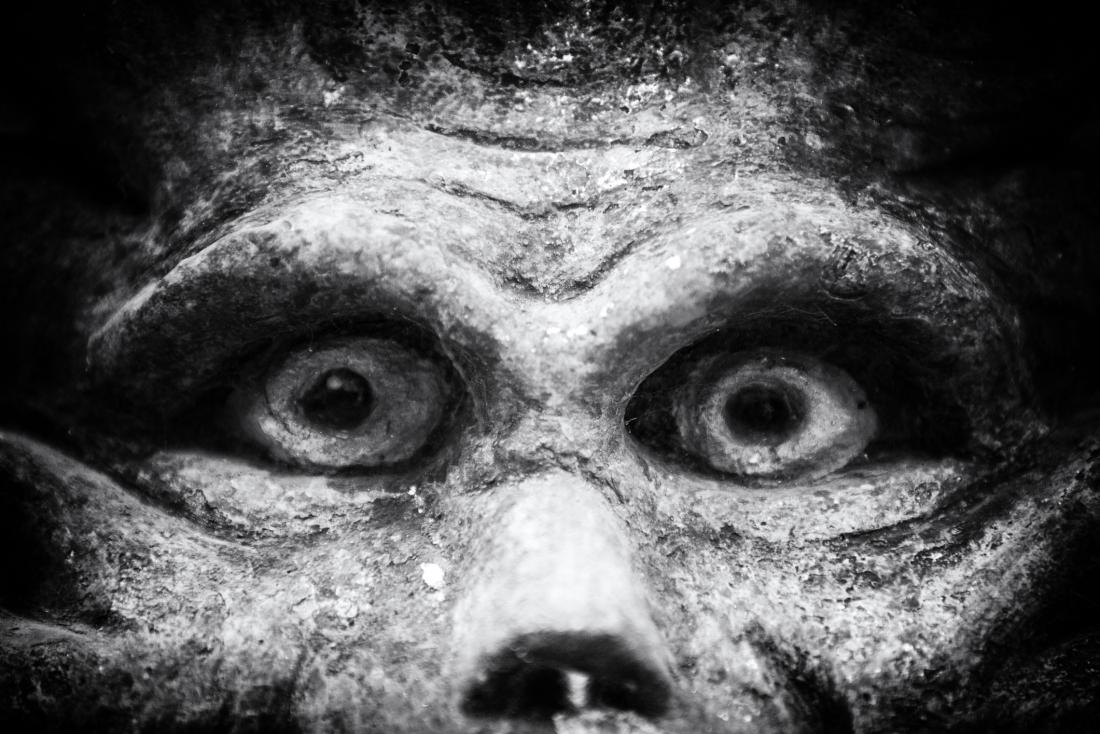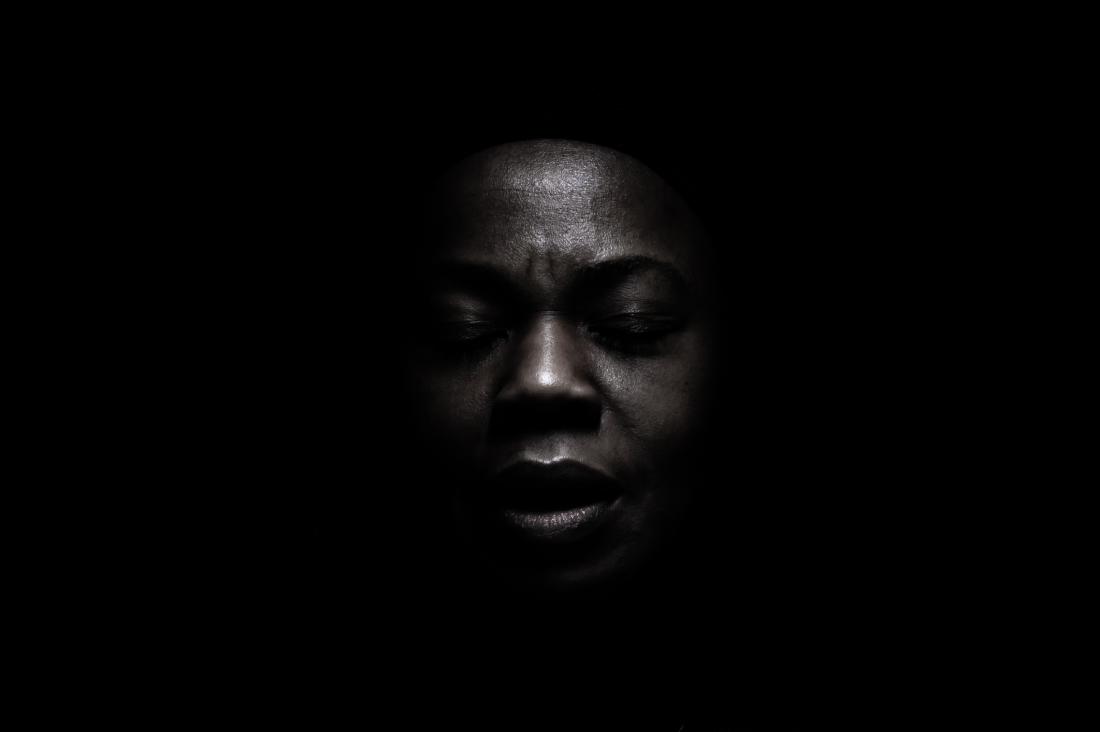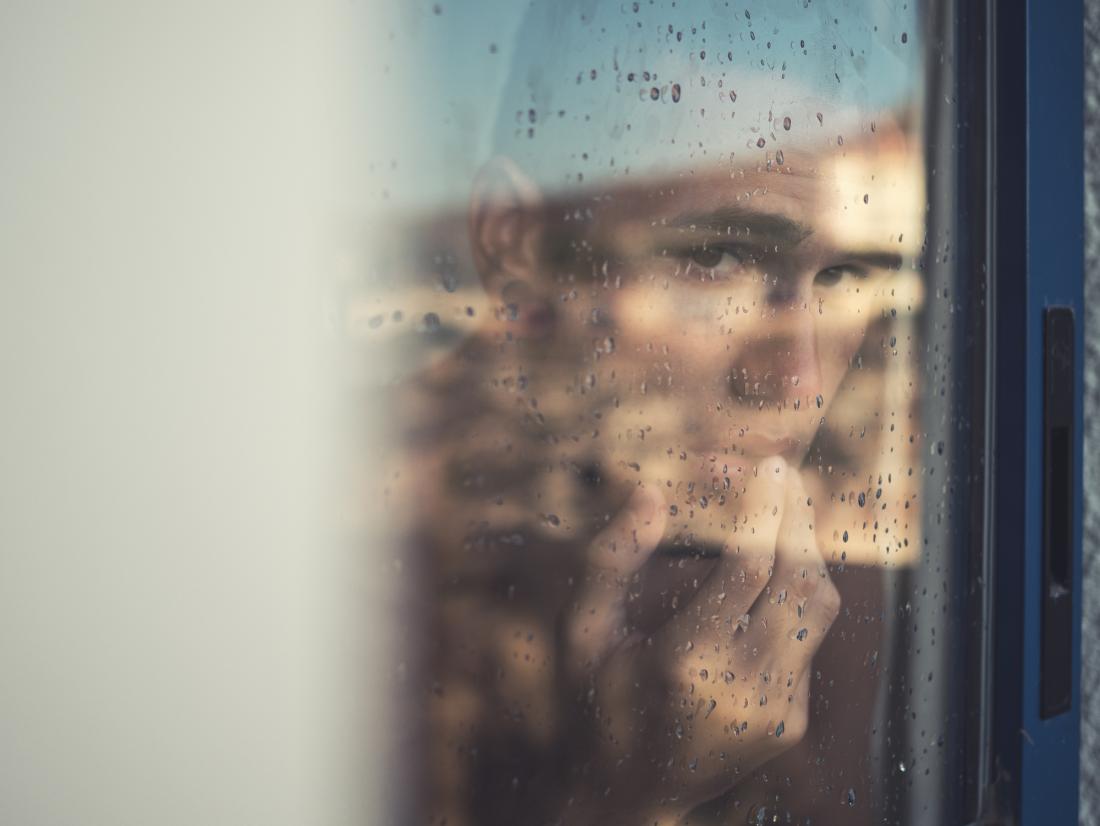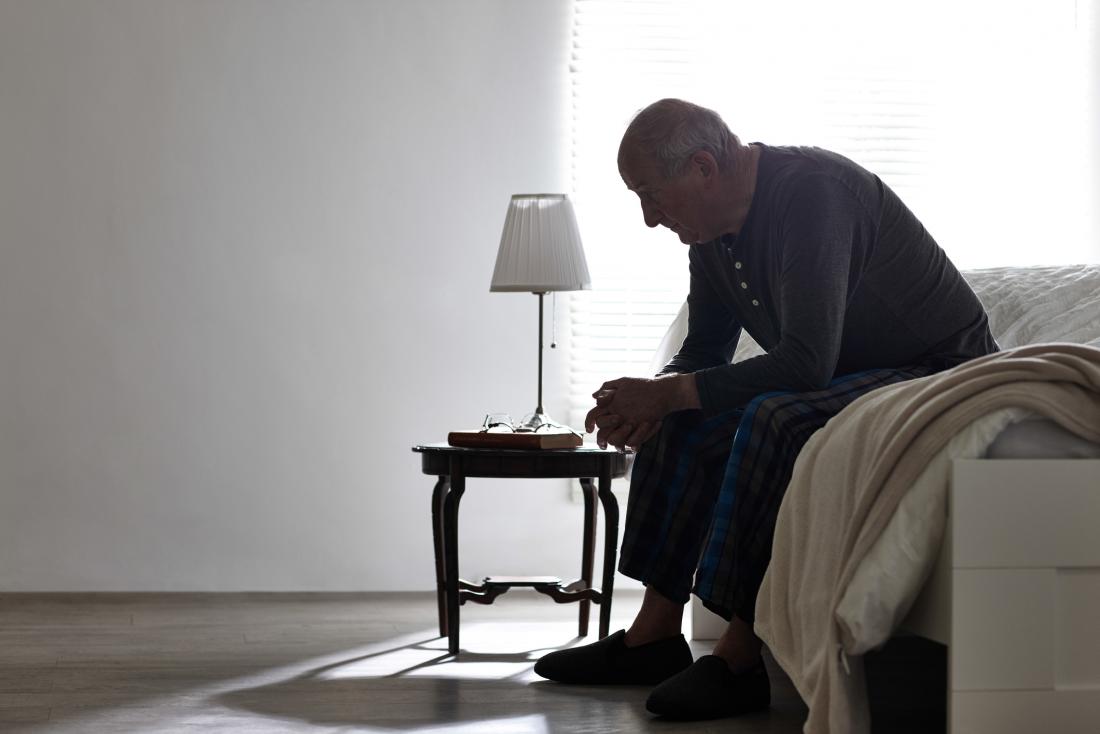
The story of anxiety is deep and long.
For many, anxiety is an ever-present uninvited guest; in our circle of friends, among family members, and in communities at large.
It seems to be rampaging through society like a noncontagious cognitive plague, forming a low-level hum that hides in the corners of our collective minds.
In August 2018, Barnes & Noble — who are the largest book retailer in the United States — announced a huge surge in the sales of books about anxiety; a 25 percent jump on June 2017. “[W]e may be living in an anxious nation,” one press release dryly notes.
Does this surge in interest reflect a genuine spike in anxiety, or are people simply more aware of it? In this article, we ask whether anxiety truly is increasing, if wealthier nations are bearing the brunt, and why anxiety seems to be sitting in the driving seat of modern society.
Many of us — a surprisingly high percentage, as we shall see — are all too familiar with how anxiety feels. For those who have not experienced anxiety first-hand, throughout the text, we have added excerpts from personal experiences.
What is anxiety?
Anxiety is a nebulous term that covers a great deal of psychological ground. At the thinnest end of the wedge, before an exam or a job interview, we might feel anxious. This is both understandable and normal; it is not a cause for concern.
Anxiety is only a problem when it extends beyond logical worry in an unreasonable, unwarranted, uncontrollable way. Situations that should elicit no negative emotions all of a sudden seem life-threatening or crushingly embarrassing.
At the widest end of the wedge, anxiety can arrive as a symptom of another mental illness, such as panic disorders, post-traumatic stress disorder, phobias, or obsessive-compulsive disorder (OCD).
When anxiety is a person’s primary symptom, it may be referred to as generalized anxiety disorder (GAD). The National Health Service (NHS) in the United Kingdom summarize GAD neatly.
“People with GAD,” they explain, “feel anxious most days and often struggle to remember the last time they felt relaxed. As soon as one anxious thought is resolved, another may appear about a different issue.”
GAD affects around 6.8 million people in the U.S. — or more than 3 percent of the country’s adults.
Another common form of anxiety is social anxiety, which affects people more specifically in social situations.
It might make someone very self-conscious, perhaps not wanting to eat or drink in front of others, fearing that people are talking about them, or worrying about being lost in a crowd. It comes in many forms.

Anxiety disorders are more common than one might think.
Today, “anxiety disorders are the most common mental illness in the U.S.,” affecting around 40 million adults — almost 1 in 5 people.
Globally, the World Health Organization (WHO) say that almost 300 million people have an anxiety disorder.
Anxiety disorders are not new, either. In fact, Robert Burton wrote this description in The Anatomy of Melancholy (1621) referring to a patient of Hippocrates. It will resonate with anyone who has ever experienced anxiety.
“He dare not come into company for fear he should be misused, disgraced, overshoot himself in gestures or speeches, or be sick; he thinks every man observeth him.”
Interestingly, anxiety is not just a human experience, and evolution is ultimately to blame (or thank); as with other animals, humanity’s survival relies on our natural ability to feel anxious about genuinely dangerous situations and to be on guard.
It is when this life-saving mechanism is triggered at inappropriate times or gets stuck in the “on” position that it becomes a problem.
So, to the first big question: is anxiety really affecting us more now than it has in the past? Is anxiety on the up in the West, or, in a modern society where good mental health is a goal in itself, are we just more likely to notice and discuss it?
“When it’s bad, it feels like an electric current building up inside of me and like it’s going to start shooting out of me, except it doesn’t, which is worse.”
Anon.
Is anxiety more prevalent in the West?
A large study that was published in the journal JAMA Psychiatry in 2017 set out to answer this exact question. In particular, the researchers looked at GAD.
One might expect that, since mental illness tends to be more common in areas of the U.S. that have a lower socioeconomic status, anxiety might also be more prevalent in countries with a lower socioeconomic profile.
Additionally, in less wealthy countries, people can be under substantial stress; finding food, water, or safety might be an issue in some regions.
However, it is important to remember that GAD is about feelings of anxiety that are unreasonable. In a country where there is genuine struggle, higher levels of anxiety might rightly be considered justifiable and therefore not a diagnosable condition.
The study, involving 147,261 adults from 26 countries, concluded:
“The disorder is especially common and impairing in high-income countries despite a negative association between GAD and socioeconomic status within countries.”
In other words, within each country, GAD is more prevalent in less wealthy regions. However, as a whole, it is the residents of wealthier countries who are more likely to experience GAD, and their lives are more significantly impacted by it.
Breaking down the statistics, the scientists found that lifetime estimates for GAD were as follows:
- low-income countries: 1.6 percent
- middle-income countries: 2.8 percent
- high-income countries: 5.0 percent
This is in line with other research that found a higher prevalence of anxiety in wealthier economies.
In the WHO’s Depression and Other Common Mental Disorders Global Health Estimates report that was released in 2017, they compare prevalence estimates of mental disorders across global regions.
When they compare the levels of depression, no single area has significantly higher rates. When it comes to anxiety disorders, however, it’s a different story; the Americas are head and shoulders above all other regions, including Africa and Europe.
Interestingly, though the U.S. and the West in general do seem to be taking the lead in the anxiety stakes, it may not stay this way for long; the very same report explains that common mental health disorders are increasing in lower-income countries “because the population is growing and more people are living to the age when depression and anxiety most commonly occurs.”
Added to this, anxiety tends to be less common in older adults. Also, because the average age of U.S. individuals is slowly rising, the percentage of people with anxiety disorders may gradually decline.
To conclude this section, although other countries might be catching up, it does seem that anxiety is more common in wealthier nations and perhaps the U.S. in particular — but is it getting worse?
“Anxiety is mysterious. It can feel like an invisible cage that keeps you prisoner on your sofa, unable to move for fear of something that you can’t quite identify.”
Anon.
Is anxiety increasing in the U.S.?
Much debate surrounds this question. Is anxiety on the rise, or are we simply more inclined to think and speak about it these days? This is a tough question to pick apart, but we must try.
The American Psychiatric Association ran a poll on 1,000 U.S. residents in 2017, and they found that nearly two thirds were “extremely or somewhat anxious about health and safety for themselves and their families and more than a third are more anxious overall than last year.”

Anxiety in the U.S. may be impacting millennials most.
They also noted that millennials were the most anxious generation.
In 2018, the same poll was repeated. Anxiety was shown to have risen again by another 5 percent.
Millennials were revealed to still be the most anxious generation.
It is crucial to remember, though, that increasing feelings of anxiety do not equate to a diagnosis of anxiety disorder.
Naturally, it is possible to feel more anxious than you previously did without it being classified as a mental condition.
Looking at the broader picture, several studies have charted the rise of mental health issues in the West.
For instance, a meta-analysis published in 2010 took data from studies that included over 77,000 young people; the scientists found generational increases in mental health issues in 1938–2007.
Another report, using data from four surveys completed by almost 7 million people in the U.S., concluded that “Americans reported substantially higher levels of depressive symptoms, particularly somatic symptoms, in the 2000s–2010s compared to the 1980s–1990s.”
Outside of the U.S., the U.K. Council for Psychotherapy published a report in 2017 that assessed the mental health of full- and part-time employees. Their figures show that “workers reporting anxiety and depression have risen by nearly a third in the last 4 years.”
As for Europe at large, a huge analysis that was published in 2011 concluded that almost one third of adults had some type of mental health issue, with anxiety disorders being the most frequent.
However, this study was a follow-up to a similar pan-European review conducted in 2005, and the authors note that there were no significant increases between these years.
“I have a list of possible problems in my head. If all the real problems are solved, I turn another one into a problem so that I can worry about it. These are constant facts of life. It is not increasing. It has always been like this.”
Anon.
The authors believe that the perception of a new wave of mental health issues may be an illusion, concluding that “the true size and burden of disorders of the brain in the [European Union] was significantly underestimated in the past.”
Another paper concludes that “it is difficult to find reliable evidence for a change in prevalence rates for anxiety disorders. Epidemiologic data obtained before the introduction of psychiatric classification systems […] are too imprecise to be comparable with modern studies.”
The study authors note that “the rate of treatment-seeking individuals increased, which may be the reason for the general impression that these disorders are more frequent.”
To add to the already complicated mix, anxiety disorders have a genetic factor. Researchers think that 30–50 percent of the variation in anxiety disorders within a population is down to our genes.
Levels of a condition that has a heritable component are likely to be more stable, since the prevalence of those genes won’t change much across a few decades or even centuries.
Whether the upward trend is real or imagined, there is no question that anxiety is dominant in the U.S. population; so, the next question is…
Why does U.S. society breed anxiety?
Before we dive into the next section, we must make clear that there is no definitive answer to this question. Many people have offered insight, be it backed up by evidence or not. The answer is likely to be complex in the extreme and a mishmash of all facets of modern life and societal pressures.

Anxiety is complex — as are its origins.
No two people are the same; no two people’s experiences are the same; no two people’s experience of anxiety is the same.
Therefore, it is highly unlikely that there will be an answer that fits all sizes.
That said, there is a range of theories that attempt to explain why anxiety might be creeping steadily into the foreground.
As we have seen, the number of people in wealthier societies who have an anxiety disorder is surprisingly high.
However, it’s worth noting that many people who experience daily anxiety may not meet the criteria for an anxiety disorder but are still affected.
These people are harder to quantify; they fly under the radar, not enduring enough psychological discomfort to join the GAD ranks but still feeling its force.
“If someone overtakes me on my way home, anxiety convinces me that it’s my fault for going too slow. If a family member or friend gets into an accident, anxiety convinces me it’s my fault for not wishing them a safe journey.”
Anon.
Below are a few theories that have been kicked around by people interested in how anxiety might develop.
A shift in society
Some say that humans in Western societies are becoming more psychologically sensitive because there is less pressure on us to survive now that food and water are so abundant. They believe that our gaze has moved away from survival and shifted inward.
They argue that we now focus on extrinsic desires, such as a new car and a big house, rather than intrinsic desires, including the joy of family and friends, and meeting with others in the community.
This all sounds like it may be difficult to pin down with research, but some scientists have come to similar conclusions.
One study published in the 1990s found that people who pursued money, looks, and status were more likely to feel anxious and depressed.
A study looking at changes in freshman attitudes over a 40-year period found that the number of students who place importance on financial gains has almost doubled since the 1960s, whereas “developing a meaningful philosophy for life” has dropped in importance dramatically.
A meta-analysis that investigated increased psychopathology in U.S. youths over time concluded that “[t]he results best fit a model citing cultural shifts toward extrinsic goals, such as materialism and status and away from intrinsic goals, such as community, meaning in life, and affiliation.”
Motivations are drifting away from the community and onto the individual. Materialism is paramount in modern society. It’s impossible to draw a straight line between these shifts in culture and anxiety, but some are tempted to do so.
“The worst part is not being able focus — anxiety induces a thick brain fog, making it really difficult to concentrate at work. Not being able to concentrate at work, in turn, makes me feel anxious about other people’s perception of my performance and feeds the cycle.”
Anon.
Living alone
People today are much more likely to live alone than they were 50 years ago. In the U.S. in 1960, under 7 percent of adults lived alone; by 2017, that figure had soared to well over one third of adults.
Could this be playing a part? Of course, many people are incredibly happy to live alone — others, however, are not.
Loneliness has received a great deal of interest over recent years and has been discussed as a potential risk factor for depression and Alzheimer’s, among other conditions.
Although depression and anxiety disorders are separate conditions, individuals with depression commonly experience similar symptoms, such as nervousness. Social anxiety disorder often appears in tandem with major depression.

Could loneliness help explain anxiety in the West?
In fact, those who go on to develop depression often develop an anxiety disorder earlier on in their life.
Anxiety also sometimes occurs as a part of the mood changes that take place in the early and middle stages of Alzheimer’s.
Loneliness can also worsen symptoms for those with chronic pain, a condition that often brings anxiety in tow.
Similarly, being in a state of high anxiety can increase the level of perceived pain, thereby creating a vicious cycle; if someone is in pain, they feel anxious, and anxiety drives the pain.
It seems that social isolatation could potentially increase anxiety through a number of pathways.
To muddy the waters further, some people who experience high levels of anxiety choose to live alone. So, the higher number of people living alone may be part of the cause and effect of an increase in anxiety levels in the West.
A chemical world
Perhaps there’s something in the water? That sounds a little conspiratorial, but we shouldn’t dismiss it out of hand. There certainly is an unwieldy range of chemicals in the environment we inhabit.
A literature review — published in 2013 — assessed the evidence that chemicals in the environment might influence the developing brain while we are in the womb.
Poring over existing research, the scientists investigated chemicals well-known to be poisonous (such as lead), chemicals that have been considered dangerous only in recent decades (such as methylmercury), and compounds that are only now being studied for potential toxicity (including certain ingredients in plastics).
Of the chemicals they tested, only two were linked with anxiety, specifically. These were phthalates and bisphenol-A, both of which are used in the production of plastics. However, the findings were inconclusive, and the relevant studies that they analyzed produced contradictory results.
A large BMJ study involving more than 70,000 female nurses drew links between air pollution and anxiety.
To reach this conclusion, the researchers estimated long-term pollution exposure and compared it with data from an anxiety questionnaire. They found that those who had higher levels of exposure were more likely to report symptoms of anxiety.
This area of research is notoriously difficult to unpick; humans are never exposed to just one single chemical. We are all bathed in a cocktail of varying composition; a cocktail whose ingredients change across the days, months, and years.
It will be a long time before even semisolid conclusions can be made about environmental chemicals and anxiety.
“My anxiety is usually a bit like white noise in the background — I get on with life, but it always feels like there’s something I’m missing, something I haven’t attended to, or that there’s something I’ve done horribly wrong.”
Anon.
Can we blame social media?
Some others have looked to the impact of social media on mental health. After all, social media has flooded society so thoroughly in such a short space of time, it is highly unlikely to have had no impact at all.

What role does social media play in anxiety today?
Facebook was founded in 2004; today, almost 1.5 billion people use it at least once per day.
So one, singular, standalone website is now perused by around 1 in 5 people globally.
That’s incredible, and Facebook is only one of the many social media giants.
Studies looking at the link between social media and anxiety are relatively easy to find.
For instance, one that investigated social media use, sleep, and mental health in over 400 Scottish adolescents revealed that those who used social media the most, particularly at night-time, had lower self-esteem and higher levels of anxiety and depression.
Another investigation surveyed more than 1,700 young U.S. adults. The researchers compared the number of social platforms used with levels of anxiety and depression.
People who frequented higher numbers of social platforms reported higher levels of depression and anxiety. Another study on 18–22-year-olds came to similar conclusions.
Before we throw Facebook and their staff to the lions, we need to remember that cause and effect cannot be established in the vast majority of these studies.
It is possible that an anxious person seeks solace in social media. Perhaps it’s not that social media causes anxiety, but that social media is attractive to those who are already anxious. Maybe anxiety drives the user to engage with social media more often.
Because social media is so ubiquitous, it is difficult to run a study with a control group of adults who have not been introduced to it.
“For me, having OCD-related anxiety means that nothing — not even the most banal everyday activity — can be experienced without guilt and fear. And that’s why it’s draining. I’m constantly on the lookout for the harm I might involuntarily cause.”
Anon.
Is life just more stressful now?
Are jobs more stressful? Is commuting to blame? When we tell kids that they can “achieve anything if they try hard enough,” are we setting them up to fail? Not every kid can be the president (or Beyoncé), after all.

‘Fake news’ is everywhere.
Is our self image being driven into the floor by the constant bombardment on our senses of perfectly filtered, digitally altered models?
Has capitalism shifted the attention from kindly social pursuits to vastly unobtainable personal desires, leaving us with a gaping chasm we know we can never fill?
Can we lay some of the blame at the feet of the modern media, the perpetual, brightly lit news cabaret telling us that the world is broken, we broke it, and it can’t be fixed, and that everything gives us cancer?
Indeed, John S. Price, a former practicing psychiatrist, when introducing a paper on the evolution of social anxiety, writes that “as a practicing clinician, I advise all my anxious patients to avoid watching TV news.”
Climate change, nuclear apocalypse, Ebola, flesh-eating viruses, antibiotic resistance, ever-growing economic inequality, fake news…the list is endless.
Anxiety might be prevalent because the society we live in is more stressful than it was 5, 10, or 50 years ago.
However, assessing how stressful a society is compared with any other is bordering on impossible.
Perhaps anxiety is prevalent in the U.S. because of all or none of the above. After all, everyone is different, and anxiety may have a myriad of causes in each individual.
Unraveling the ins and outs of mental health is not a simple task; conditions overlap, symptoms vary, and cause and effect are blurred.
Is anxiety a spectrum that we all inhabit? Is humanity a naturally anxious species? Its severity and prevalence might fluctuate with the social conditions of the time, but perhaps it is within us all.
Maybe anxiety is poised and ready to pounce when we let down our guard, or when our guard is reduced by external forces.
This article has posed many more questions than it has answered, but at the very least, it shows how complex the issue of anxiety is. Perhaps most importantly, it shows you that if you are personally affected by anxiety, you are not alone.
